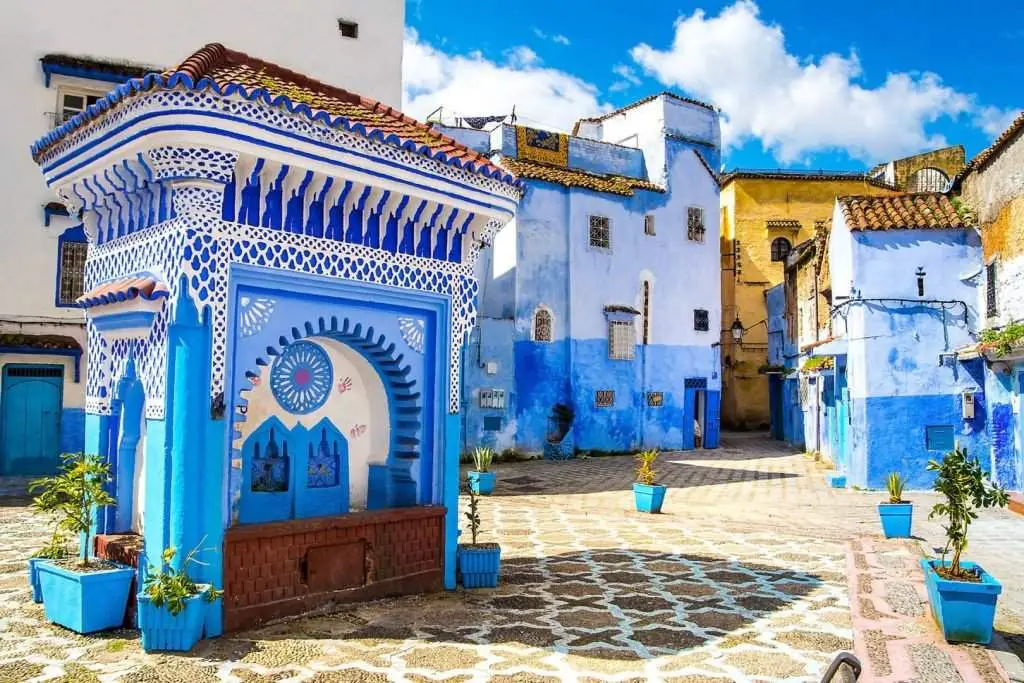
Entering Morocco From Spain
If you disembark in Ceuta and Melilla you will have a Spanish Civil Guard checkpoint at the port, which supervises the entry of goods into these cities, so private vehicles are not usually checked.
From the port you have to approach the border.
Before arriving, in the street, there are money changers. They are usually safe and widely used by locals, but as a precaution take and check the change before handing over the euros.
Another alternative is to change at the customs exchange offices, (they are not always open) or in the exchange establishments in the border towns of Castillejos, Rincon Beni Enzar and Nador.
First we will pass the Spanish customs, police that usually makes a visual control and without passport formalities.
Formalities in Moroccan territory
If you disembark in Moroccan ports, the arrival at the customs is immediate in the same port and you will have already passed the Spanish customs in the ports of departure.
Once in the Moroccan customs, you have to request and fill in (if you did not get it on the boat) the passport control forms, in the police lockers, but as it is sometimes difficult, we find individuals who offer us these sheets and help us to fill them in and deliver them in exchange for a tip (1 – 3 Euros), depending on the number of passports (they always complain and ask for more money).
This rule with date September 16, 2019, may disappear and it will only be necessary to deliver the passport with a validity not exceeding six months.
Once the document is filled in, we deliver it with the passport at the police ticket offices (there are usually several, look for the one with the shortest queue).
The policeman will check and record the data, stamp the passport and deliver it. Once the passport is stamped, we pass the baggage customs, (avoid carrying products that may suggest to the customs officer that their destination is the sale within the country), we will show it at the exit of customs to the control policeman.
Going By Car
Once the passport control sheet has been filled in, we hand it in at the police window without getting out of the vehicle.
Once this procedure is completed, we go to the Customs control, where after parking the vehicle, we must bring the document for the temporary import of the vehicle to Morocco. (“D16 ter”).
Since January 1, 2019, the Customs Administration has implemented, for people who have their habitual residence abroad, (foreign tourists, Moroccans living abroad, foreign aid workers, etc.), the ELECTRONIC declaration of admission to Morocco. The ELECTRONIC declaration of temporary admission of their vehicles registered abroad called “ter D16” in order to ensure a smooth passage through customs.
This document, which used to be provided at the border, is now available on the Moroccan Customs website (more information on the Customs website), “AT BADR module”, which must be printed out, although due to technical problems it is still available at Customs.
In which the data entered by the declarant (personal data and vehicle), at the time of entry into Morocco, will be required at the ticket office-customs office, and new data will be noted, for which you must attach the passport, the vehicle documentation registration certificate, both with the same holder, if it is a rental vehicle with the documents justifying it, in order to avoid that their destination is the sale within the country.
Being returned to its holder as proof of temporary importation and may be required by the authorities in any inspection within the Moroccan national territory.
Customs will also check our luggage, alcohol and tobacco for personal use is allowed.
In the same way that with the passport, there are assistants who provide and are responsible for filling them in exchange for a tip.
Once the vehicle has been legalized and before leaving customs, the passport must be handed to a policeman who will check if it is stamped.
If you arrive by air, the formalities are similar and are carried out at the airport, first passing through the police control with the passport and control sheet filled in and then passing through customs and baggage control.
Departure from Morocco
The departure from Morocco is simpler. We will fill in again the passport control sheet and we will deliver it together with the passport at the police control, to stamp the exit.
If we go with vehicle, once passed the police control we will deliver in the customs the document of import of the vehicle, to give of low, receiving a sealed copy to justify the exit.
In the Spanish customs they will check the passport and the civil guard will make control of the luggage and vehicle in case we carry some unauthorized goods.